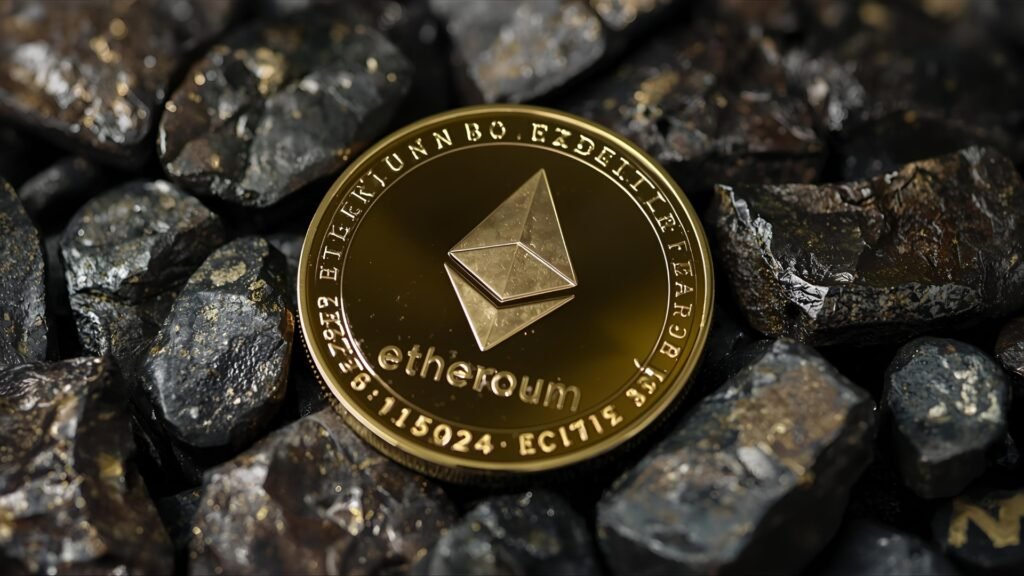The question on every crypto investor’s mind as we head deeper into the second half of the decade is simple: when will Ethereum finally and sustainably clear $5,000? As of October 1, 2025, ETH trades around the low-$4,000s, within striking distance of its all-time highs. That proximity alone tempts forecasts—but price action without context is just noise. To get a credible answer, we need to weigh Ethereum’s evolving fundamentals—Layer-2 scaling, staking dynamics, deflationary pressure from EIP-1559, and the post-spot Ethereum ETF landscape—against macro conditions and competition.
Ethereum’s roadmap, notably Dencun (EIP-4844) and the ongoing Pectra era with EIP-7702, reshapes costs, user experience, and security—key levers for demand and, ultimately, price. Below, we build a grounded, readable path to $5K by combining timely market data with the tech roadmap and institutional flows. You’ll find realistic scenarios rather than hype, plus a month-by-month feel for what needs to go right.
Why $5K Matters—and Why It’s Plausible
The $5,000 threshold is more than a round number; it’s a confidence marker that suggests Ethereum’s utility and demand have outpaced cyclical risk. ETH’s current price band in October 2025 sits near ~$4,150, which places $5K only ~20%–25% higher—achievable in a single strong quarter if catalysts align. Spot Ether ETFs debuted in July 2024 in the U.S., broadening access for traditional investors and creating a structural buyer base similar—though smaller in scale—to Bitcoin’s. Expectations at the time were for ETH ETF flows to be a fraction of Bitcoin’s, but the vehicle’s mere existence reduced friction for institutions that prefer regulated wrappers.
On the bank-desk side, Citi recently reiterated a relatively conservative year-end 2025 target of ~$4,300 for ETH, while other houses have floated higher upside if application demand accelerates. Such bank notes aren’t destiny, but they do tee up the narrative: ETH can reclaim highs on fundamentals, not only sentiment.
The Technology Flywheel: Dencun, Pectra, and Beyond

Dencun (EIP-4844) Made Layer-2s Cheaper—and Paved the Road to Sharding
The March 2024 Dencun upgrade introduced EIP-4844 (proto-danksharding), adding “blob” transactions that drastically reduce data availability costs for Layer-2 rollups. Practically, this lowers fees on major L2s and increases throughput without sacrificing decentralization. Early analyses in 2024 and 2025 show strong adoption of blob-carrying transactions—evidence that the design works in the wild and sets the stage for full danksharding later. Lower costs pull in users; more users increase fees burned and revenues; both support the investment case.
Pectra and EIP-7702: Usability and Security Upgrades
The Pectra phase, progressing through 2025, centers on user experience and account functionality. A headline change, EIP-7702, lets externally owned accounts (EOAs) temporarily point to smart-contract code, enabling smart-account-like features and safer, more flexible authorization—without forcing users to migrate wallets. The aim: make Ethereum apps feel more like mainstream software while preserving the protocol’s security model. This matters for price insofar as better UX fuels adoption and stickiness.
Issuance, Burn, and Staking—The Triad That Drives Scarcity
Post-Merge Issuance Fell ~88%; Burn Can Offset It
Since the Merge, baseline ETH issuance dropped dramatically compared to proof-of-work. On many days, if average gas exceeds roughly mid-teens gwei, EIP-1559’s fee burn can fully offset new issuance—pushing net supply growth toward zero or negative. The point isn’t dogma (“ultrasound money” forever) but elastic supply: at high activity, burn dominates; at low activity, issuance shows through. That elasticity links network usage directly to scarcity.
Has ETH Been Deflationary Since 2021’s Fee Burn?
Since EIP-1559 (August 2021), multiple trackers and analyses confirm that millions of ETH have been burned, with periods of net deflation, especially during high on-chain activity. While some recent takes argue supply has modestly grown in certain windows (especially after fee reductions on L2 traffic), the broader picture is that supply dynamics now respond to demand in a way they didn’t pre-2021. In price models, that optionality is valuable.
Staking: 29%–30% of Supply Locked and Growing
ETH’s proof-of-stake design means a material slice of the supply is bonded to secure the network, earning 3%–4% annual rewards in 2025. By mid-2025, estimates put staked ETH around 29%–30% of supply—roughly 34–35 million ETH—tightening liquid float and dampening sell pressure, particularly when validator withdrawals are stable. Independent dashboards and industry reports pointed to new highs through the summer.
Institutions and Market Structure: ETFs, Liquidity, and Compliance
The arrival of spot Ether ETFs in U.S. markets (July 2024) fortified ETH’s legitimacy among advisors and corporate treasuries that prefer custody-light exposure. While early consensus held that ETH’s flows would trail Bitcoin ETFs’, the vehicles still matter for price discovery, basis markets, and options depth. As rule changes streamline listings, issuers have found it easier to keep product lines fresh—another tailwind for investor access.
Combine ETFs with a growing derivatives complex and on-chain finance, and you get a richer two-sided market. That tends to compress volatility in quiet periods but amplifies moves around catalysts, potentially accelerating a run to $5K when macro and on-chain currents align.
Catalysts That Could Pull ETH to $5,000
1) Cheaper, Faster L2s Driving Daily Active Users and Fees
Post-Dencun fee reductions on rollups and continued L2 roadmap execution can bring more retail activity on-chain: trading, gaming, social, and payments. Higher utilization increases base fees burned on L1 and sequencing revenue on L2s, improving the “cash-flow” narrative for Ethereum’s ecosystem. Technical adoption data since Dencun supports this trend.
2) Pectra-Enabled UX Improvements
If EIP-7702 and companion improvements reduce friction—safer approvals, better account recovery, smoother dApp flows—non-crypto-natives are likelier to stick. For price, stickiness matters more than spikes, because it sustains fee generation across cycles.
3) ETF Inflows and Corporate On-Ramps
As ETF AUM grows, even modest net inflows can push the price when the floating supply is constrained by staking. Institutional staking (directly or via service providers) can also recycle ETF exposure into validator yield strategies, reinforcing the “own to earn” loop. Initial research notes around ETF launch underscored that ETH flows would likely be a fraction of BTC’s—but fractions of a big base still matter.
4) Staking Ratio Creep
Each percentage point added to the staking ratio immediately reduces the liquid supply. Reports in 2025 consistently pointed to new highs around 29%–30%, with queues at times forming for new validators—classic signals of persistent demand for yield and security participation.
Risks That Could Delay the $5K Breakout
Fee Compression vs. Burn
Ironically, Ethereum’s success in lowering user costs can reduce fee burn on L1, muting the deflationary impulse. If on-chain activity migrates to ever-cheaper L2s without generating sufficient L1 base fees, net supply could tilt inflationary in some windows. The protocol’s design still links activity to burn, but the locus of that activity increasingly sits on L2s. Analysts have flagged this nuance since Dencun.
Regulatory Ambiguity
While ETFs help, policy uncertainty—especially around staking and whether certain yield arrangements constitute securities offerings—could dampen institutional enthusiasm. The 2024 ETF approvals were a green light for price access, not a blanket verdict on every ETH-adjacent service.
Macro and Liquidity
Like all risk assets, ETH is sensitive to real yields, dollar strength, and equity volatility. Bank targets in September 2025 reflected this: Citi’s base case sat near current prices with bullish and bearish bands tied to macro. If growth slows or global liquidity tightens, even stellar tech progress may not immediately translate to price.
Ethereum Price Prediction: 2025–2030
2025: The $5K Attempt
With ETH around ~$4.1K in October 2025, a run to $5K hinges on consistent ETF inflows, sticky L2 usage, and favorable macro into year-end. Consensus trader models and long-range aggregator sites vary widely; one widely referenced forecast aggregator recently placed a 2025 average near mid-$4Ks, reflecting split opinions on how fast catalysts convert to price. Our view: a decisive, sustained break above $5K in late-2025 is plausible but not guaranteed; the market likely probes that level more than once before sticking.
Consolidation and Network Effects
If Pectra upgrades continue to land and L2 fees stay low, the user funnel widens. More stable ETF AUM, a staking ratio moving toward the low-30s percent, and better developer UX could underpin a durable range with $5K as support in strong macro and resistance in weak macro. Issuance-burn dynamics remain the wild card: higher activity can restore net-negative issuance; quiet months keep it slightly positive.
Beyond $5K, Toward a Utility-Valued ETH
By 2030, plausible assumptions include mainstream L2 applications, real-world asset tokenization at scale, and broader corporate treasury usage of ETFs or custodial ETH. Long-range public forecasts sometimes project highly optimistic upper bounds—into the five digits—based on compounding network effects. Treat those with caution; the path matters more than the destination. The credible bull case is utility-driven demand outpacing net issuance over multi-year windows, with ETH’s role as blockspace collateral and settlement asset strengthening over time.
So, When Does ETH hit $5,000
Base case: Ethereum tests and intermittently clears $5K within the 2025–2026 window, with a higher probability of sustaining above that level once Pectra improvements are widely adopted and ETF AUM steadies. The timeline compresses if macro turns tail-windy and if L2 activity feeds enough L1 burn to keep net issuance flat to negative.
Bull case: Strong ETF inflows, a staking ratio >30%, sticky consumer apps on L2s, and credible progress toward full danksharding could put ETH above $5K earlier and keep it there, converting a psychological ceiling into a floor.
Bear case: Fee compression without compensating volume, regulatory overhang on staking yields, or a global liquidity shock could push ETH to range below $5K longer than bulls expect—even as technology improves.
Methodology: What We Weighted Most

We anchored this outlook in publicly available, reputable sources and network-native telemetry:
-
Protocol docs & roadmaps for what upgrades actually do (not just what headlines say).
-
Upgrade analysis from engineering-driven firms for real-world impact on fees and throughput.
-
Market structure notes around the ETF era to gauge flows and access.
-
On-chain staking statistics and industry reports to estimate liquid float and yield effects.
Practical Takeaways for Investors
First, tie your $5K expectations to usage and access. Watch L2 daily active users, average fees, and the evolution of Pectra-driven smart account UX. Second, monitor ETF net flows and staking participation; both directly affect supply and demand. Third, accept that Ethereum’s supply is elastic. Periodic inflation doesn’t “break” the thesis; it just means activity must stay high or rise again to reassert the burn advantage.
Finally, situate ETH inside your broader portfolio risk budget. Crypto is path-dependent: even high-probability outcomes can detour.
See More: Ethereum Price Prediction News Today Latest Analysis & Expert Forecasts 2025
Conclusion
Ethereum sits at an inflection point where technology, tokenomics, and traditional finance access are finally pushing in the same direction. Dencun made blockspace cheaper via EIP-4844; Pectra aims to make Ethereum feel more like mainstream software; and spot ETH ETFs have pulled institutions closer to the stack. Add a staking ratio hovering near the 30% mark, and the setup for a durable move to $5,000 is strong—though not immune to macro shocks or the paradox of success (lower fees cutting burn).
The sober outlook: ETH can challenge and sustain $5K within the 2025–2026 horizon if adoption keeps compounding and ETF flows remain positive. Beyond that, the 2030s case is less about price targets and more about Ethereum’s role as programmable settlement infrastructure. If that role keeps expanding, the price tends to follow.
FAQs
Q: Did spot Ether ETFs really change demand for ETH?
Yes—ETFs lowered the barrier for institutions and advisors to allocate to ETH in compliant wrappers. Early commentary expected ETH inflows to be smaller than Bitcoin’s, but even a fraction matters when liquid float is constrained by staking.
Q: What exactly did Dencun/EIP-4844 change for users?
Dencun introduced blob transactions that cut data costs for Layer-2 rollups, significantly reducing user fees on L2s and improving throughput. It’s a major step toward full danksharding and long-term scalability.
Q: How can the ETH supply be deflationary in some months and inflationary in others?
Post-Merge issuance is low, and EIP-1559 burns base fees. When network demand is high, burn can exceed issuance, shrinking supply; when demand is lower, issuance dominates and supply grows slightly. This elasticity ties scarcity to real usage.
Q: How much ETH is staked, and why does it matter for price?
Industry dashboards and reports throughout 2025 show about 29%–30% of supply staked—roughly 34–35 million ETH—which reduces circulating float and can support price when demand rises. Stakers earn around 3%–4% yields, reinforcing long-term holding.
No. Bank research in September 2025 placed base-case targets around current levels with bullish and bearish scenarios tied to macro. A sustained move above $5K still requires sticky L2 usage, positive ETF flows, and cooperative markets.
Q: Is $5K guaranteed in 2025?
No. Bank research in September 2025 placed base-case targets around current levels with bullish and bearish scenarios tied to macro. A sustained move above $5K still requires sticky L2 usage, positive ETF flows, and cooperative markets

















